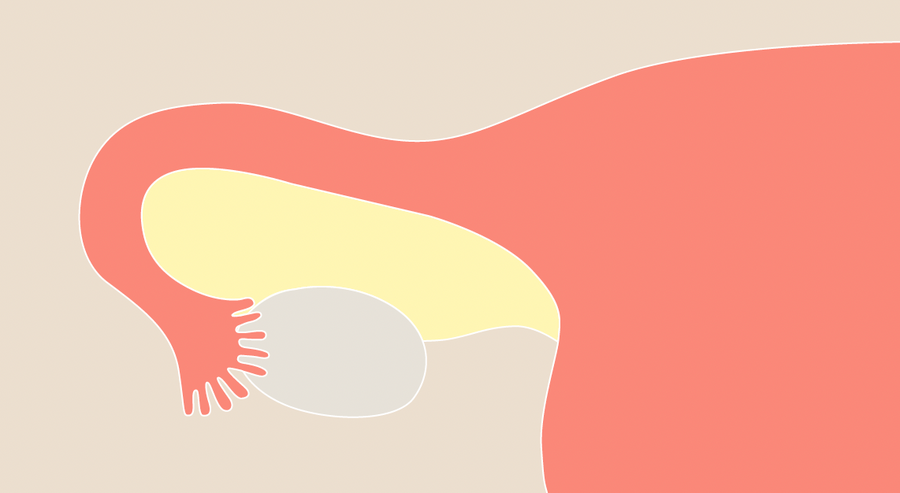IVF Series Part 4: The Egg Retrieval Process

Natalist’s Guide to IVF is an easy-to-understand, comprehensive explanation of IVF intended to demystify the process and empower you to take charge of your IVF journey. Chapter six of the book is titled Step by step: How IVF works. Today we’ll be giving you a sneak peek of the third out of seven steps Halle outlines in the book.
The egg retrieval
The egg retrieval is the surgical process of removing eggs from the ovaries. Once you arrive in the clinic, you will be given an IV. You will then meet an anesthesiologist who will put you to sleep in a procedure room. Your REI will then perform a transvaginal ultrasound to visualize the ovaries and the egg-containing follicles within the ovaries. Your doctor will then guide a long, thin needle, which can be seen on ultrasound, into each follicle, and the eggs are removed or “aspirated.” The process is relatively quick, at about 15 to 20 minutes, and performed under sedation to keep you comfortable. [1-3]
Once the fluid from each follicle in your ovaries is aspirated, it’s handed to an embryologist who will examine the fluid under a microscope and identify eggs. You’ll find out how many eggs were retrieved before you leave the clinic that day.
Preparing for the egg retrieval procedure
Here are some steps you can take to prepare for an egg retrieval:
- Follow pre-procedure instructions
- Arrange for transportation
- Wear loose, comfortable clothing
- Bring any necessary items
It’s also important to communicate with your doctor about any concerns or questions you may have before the egg retrieval. Your doctor will be able to provide you with more detailed information and guidance to help you prepare for the procedure.

Post-egg retrieval recovery
Your clinic will give you information about post-egg retrieval recovery. Generally the guidelines are to rest; and if you received anesthesia, not to drive, use machinery, or drink alcohol [4].
It is common to experience some discomfort and side effects after an egg retrieval, including:
- Nausea and vomiting
- Pelvic pain
- Mild cramping
- Bloating
- Fatigue
- Constipation
- Mild spotting
It is important to follow your doctor's instructions for post-procedure care, including taking any prescribed medications and getting plenty of rest. If you experience any unusual, severe, or persistent symptoms, such as heavy bleeding or severe abdominal pain, be sure to contact your doctor immediately.
Halle Tecco, Natalist founder, has put together an e-book inspired by her own IVF journey with hopes of demystifying the process and empowering readers with the information they need to take charge of their IVF journey. Guide to IVF has been medically reviewed by Dr. Dana McQueen, an experienced OBGYN and reproductive endocrinologist.
Want to keep reading? You can gain access to this full section by purchasing the e-book here, which includes even more helpful checklists, charts, tips, and expert advice. A downloadable PDF will be emailed to you after purchase.
Preview more sections:
- IVF Series Part 1: Natalist Guide to IVF Book
- IVF Series Part 2: How Infertility Works
- IVF Series Part 3: Overview of IVF Prep and Paperwork
- IVF Series Part 5: Embryo Transfer
Sources:
- Ho J. In vitro fertilization: Overview of clinical issues and questions. UpToDate. April 2023. Accessed May 2023. URL
- Shah, M. Q&A: The Basics of IVF. Natalist. May 2, 2020. Accessed May 2023. URL.
- In vitro fertilization (IVF). MedlinePlus. Accessed May 2023. URL
- After Your Egg Retrieval. University of Washington Medical Center. Accessed May 2023. URL
Reach Out, We're Here
Have questions about your order or products? For the speediest answer, check out our FAQ section. Need something else? Come find us below.
Please keep in mind our regular business hours; Monday-Friday, 9am-5pm CT.
Customer Support
support@natalist.com
Press Inquiries
media@everlyhealth.com
Business & Partnerships
team@natalist.com
Affiliates + Influencers
team@natalist.com
Job Openings
Careers Page























